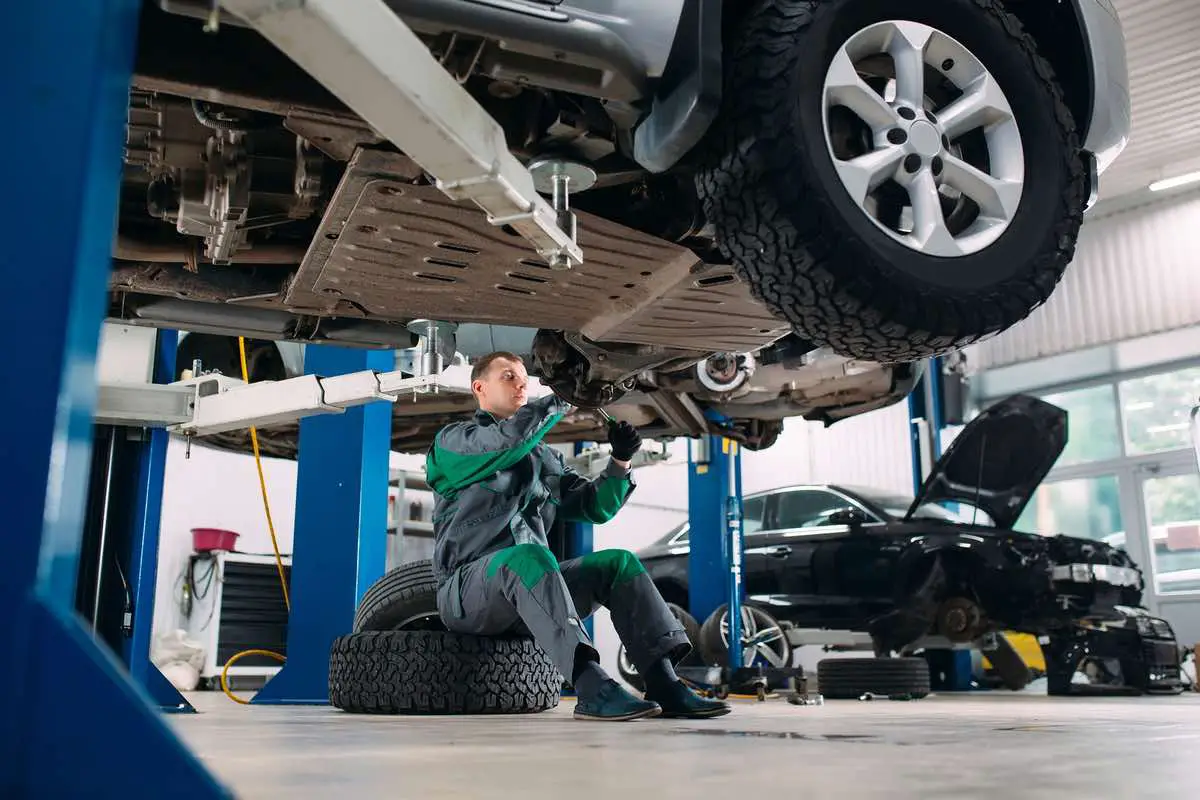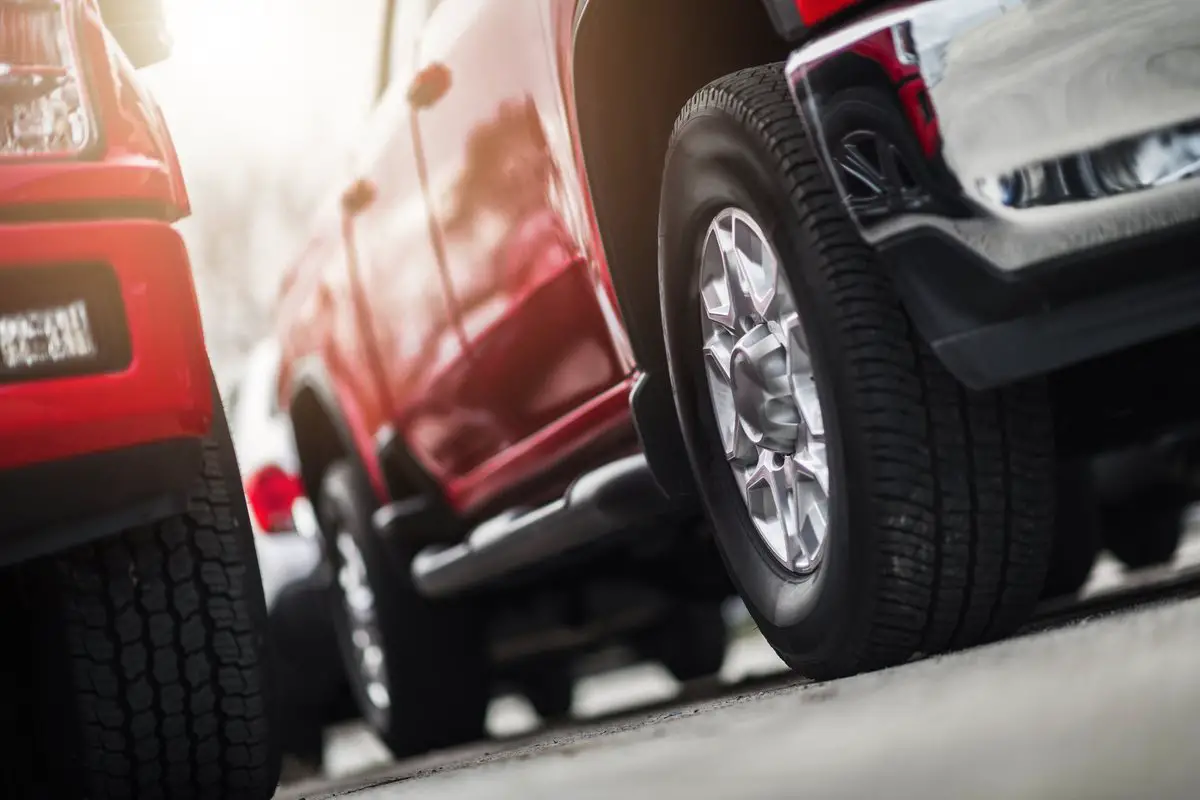A lift kit installation on any vehicle is pretty significant. Owners enjoy the benefits of more ground clearance for rough terrain, more tire clearance inside the wheel well, and just plain looking cool on the road. But remember that a lift kit will alter the performance of your vehicle.
After the lift kit installation is complete, you’ll need to perform some other tasks to ensure safety, comfort, and durability. Most importantly, you need to replace the tires and get better brakes and shock absorption. Optionally, you can also get a running board.
There are two ways to lift a vehicle with a kit: one is the body lift, the other is the suspension lift. Since body lifts only lift the body of the vehicle and do not provide extra ground clearance, we’re going to set our sights on the suspension lift. Let’s get started with the list and see what we’re in for.

Replace the Tires
There are a couple of reasons—at least—to replace the tires on a vehicle that’s been lifted. First and foremost, your safety—and that of others—depends on it. A higher vehicle almost always needs larger tires to improve its handling.
If your vehicle is a truck you intend to take off-road, balance and ground clearance are necessary. Wide tires provide the balance, whereas tall tires add ground clearance. Consider where you plan to take your truck and find a set of tires that hits a good “sweet spot” for your money.
Thinking of using the lifted vehicle as a daily driver? If so, check the market for all-terrain tires. These are safe for on and off-roading. Better still, they don’t tend to make as much noise on smooth surfaces.
Another reason to replace the tires after a lift? Your big, tough truck might look silly if you leave the tiny “stock” tires on it. Don’t do that to yourself or the truck.
Upgrade the Brakes
With those more prominent tires and larger wheels now installed, a lifted vehicle suddenly has a good amount of extra weight to carry…and to stop.
To accomplish this all-important latter step, most lift kits require an upgrade in brake pads and rotors. For instance, you might need to move from a 15″ (381 mm) brake rotor to a 19″ (482.6 mm) rotor, with larger brake pads to accommodate that size.
Indeed, not upgrading the brakes might be impossible, as larger wheels simply will not fit all of today’s stock rotors. But even if you can manage the feat—don’t. Stopping power will feel mushy or, perish the thought, become almost non-existent.
The market is rife with rotors and brake pads tailored explicitly for the coolness of a lifted vehicle. There’s sure to be a kit that works perfectly for your baby.
Upgrade the Shock Absorbers
Just like with tires, your vehicle’s stock shock system may not be suitable for supporting a lift kit. After a lift kit installation, the truck may bounce and rock too readily or give you a stiff, bumpy ride.
Lift kits that raise suspension more than 3 inches (76.2 mm) will usually need new shock absorbers. Also, you will need to replace these shock absorbers about every 40,000 miles (64373.76 km). Keep these things in mind should you decide to go all in on a suspension lift kit.
Re-Gear the Vehicle
Re-gearing a vehicle alters the ratio of its pinion and ring gears. In turn, the torque range (shift range) and speed of the vehicle also change.
With a suspension lift plus larger tires, re-gearing your truck’s drivetrain may become necessary. This is because the truck’s stock drivetrain becomes taxed—and perhaps over-taxed—with all that extra weight.
Stock drivetrains on a lifted vehicle often result in problems such as:
- Lower fuel economy
- Slower acceleration
- Undo stress or strain on the drivetrain
The good news is that the perfect drivetrain kit exists for every lift kit. Match one of these kits up with how high you decided to lift and how big your tires are.
Re-Set the Headlights
Now that your truck rests higher than when you bought it, the headlights will no longer be trained to the correct position. In other words, as you cruise down the road at night, the beams are going to provide some excellent reading assistance for those red-eyed squirrels way up in the trees. Worse, oncoming drivers will get temporarily blinded.
You could adjust the beams using your best guessing skills, or get a bit more technical by watching this handy YouTube video:
Don’t forget to reset your headlights after a lift. It makes the road safer for everyone—and maybe those squirrels will finally be able to get a decent night’s sleep.
Get a Running Board
This step is really up to you. But let me say it now: Climbing into the cab after a lift kit installation will be more challenging. How much so depends on how high you decided to lift.
A good running board makes climbing up—and down—easier and safer. Running boards come in lots of styles, so don’t worry about not being able to find one that suits your ride. It’s out there.
Get To Know the Vehicle All Over Again
Do not, under any circumstances, jump into a newly lifted vehicle and start driving it the way you used to. This is a different car now. It rides higher, the suspension has changed, and the tires are bigger.
Take it for a spin around town to get the feel of its aftermarket alterations. Drive slowly, turn with care, and for pity’s sake, don’t crush any Toyota Priuses. I’m counting on you to do the right things here.
Routine Maintenance
All vehicles need a little TLC from time to time, and the ones with lift kits are no different. Indeed, many of the maintenance steps for a lift kit are similar to cars with stock ride height.
Keep tabs on things like:
- Nuts and bolts
- Cable connections
- Lubrication
- Worn or damaged parts
Inspect your lift kit before every ride to ensure everything is tight and all right. Again, this hails to the safety of you and others on the road. Not only that, but a little preventive maintenance goes a long way toward saving you money on expensive replacements.

Final Thoughts
Lift kits give trucks even more off-roading capability than what came with the stock version. On top of that, they look awesomely intimidating. But like most other things in life, they don’t come without caveats. The above list provides some necessary wisdom for anyone interested in a little more ground clearance.
